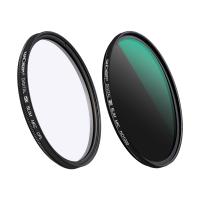What Do We Use Microscopes For ?
Microscopes are used for magnifying and observing objects that are too small to be seen with the naked eye. They are commonly used in scientific research, education, and various industries. Microscopes enable scientists and researchers to study the structure, composition, and behavior of microscopic organisms, cells, tissues, and materials. They are essential tools in fields such as biology, medicine, chemistry, geology, and materials science. Microscopes can provide valuable insights into the intricate details of biological processes, help diagnose diseases, analyze the quality of materials, and contribute to advancements in various scientific disciplines.
1、 Observation of microscopic organisms and cells
Microscopes are essential tools used in various scientific fields for the observation of microscopic organisms and cells. They enable scientists to study the intricate details of these tiny structures, leading to significant advancements in biology, medicine, and other related disciplines.
One of the primary uses of microscopes is in the field of microbiology. Microorganisms, such as bacteria, viruses, and fungi, are too small to be seen with the naked eye. Microscopes allow scientists to visualize and study these organisms, helping to understand their structure, behavior, and interactions with their environment. This knowledge is crucial for developing treatments and vaccines for infectious diseases.
In the field of cell biology, microscopes are used to examine the structure and function of cells. By observing cells under high magnification, scientists can investigate cellular processes, such as cell division, protein synthesis, and organelle function. This knowledge is fundamental to understanding how organisms develop, grow, and function.
Moreover, microscopes play a vital role in medical research and diagnostics. They enable pathologists to examine tissue samples and identify abnormalities, such as cancer cells. Microscopes also aid in the study of genetic disorders, allowing scientists to analyze chromosomes and DNA sequences.
In recent years, advancements in microscopy techniques have expanded the capabilities of these instruments. For instance, confocal microscopy allows for the visualization of three-dimensional structures within cells and tissues. Super-resolution microscopy techniques, such as stimulated emission depletion (STED) microscopy and structured illumination microscopy (SIM), have pushed the limits of resolution, enabling scientists to observe structures at the nanoscale.
Furthermore, the development of live-cell imaging techniques has revolutionized cell biology research. Fluorescence microscopy combined with fluorescent probes allows scientists to track dynamic processes within living cells, such as protein movement, cellular signaling, and cell migration.
In conclusion, microscopes are indispensable tools for the observation of microscopic organisms and cells. They have played a crucial role in advancing our understanding of biology, medicine, and various scientific disciplines. With ongoing advancements in microscopy techniques, scientists can delve even deeper into the microscopic world, uncovering new insights and pushing the boundaries of scientific knowledge.
2、 Examination of small structures and details in various materials
Microscopes are essential tools used in various fields of science, research, and industry. They enable the examination of small structures and details in various materials, providing valuable insights and advancing our understanding of the microscopic world.
In the field of biology, microscopes are used to study cells, tissues, and organisms. They allow scientists to observe and analyze the intricate structures and processes that occur within living organisms. Microscopes are also crucial in medical research, aiding in the diagnosis and treatment of diseases by enabling the visualization of pathogens, abnormal cells, and tissue samples.
In materials science, microscopes are used to investigate the properties and characteristics of different materials at the microscopic level. This is particularly important in fields such as metallurgy, nanotechnology, and semiconductor research, where the behavior and performance of materials are influenced by their microstructure.
Microscopes are also widely used in forensic science, enabling the examination of trace evidence such as fibers, hairs, and fingerprints. They play a crucial role in criminal investigations, helping to identify suspects and provide evidence in court.
Furthermore, microscopes have found applications in environmental science, allowing scientists to study microorganisms, pollutants, and the impact of human activities on ecosystems. They are also used in geology to analyze rock samples and identify mineral compositions.
With advancements in technology, microscopes have become more powerful and versatile. Electron microscopes, for example, can provide even higher magnification and resolution, allowing scientists to observe structures at the atomic level. Additionally, techniques such as fluorescence microscopy and confocal microscopy have enabled the visualization of specific molecules and cellular processes in real-time.
In conclusion, microscopes are indispensable tools for the examination of small structures and details in various materials. They have revolutionized our understanding of the microscopic world and continue to drive advancements in numerous scientific disciplines.
3、 Analysis of biological samples and medical diagnostics
Microscopes are essential tools in the field of biology and medicine, enabling scientists and medical professionals to analyze biological samples and make accurate medical diagnoses. These powerful instruments have revolutionized our understanding of the microscopic world and have played a crucial role in advancing scientific research and healthcare.
One of the primary uses of microscopes is the analysis of biological samples. By magnifying the samples, microscopes allow scientists to observe and study the intricate structures and processes occurring at the cellular and molecular level. This enables them to gain insights into the functioning of organisms, identify new species, and understand the mechanisms behind diseases.
Microscopes are also indispensable in medical diagnostics. They enable healthcare professionals to examine cells and tissues for abnormalities, aiding in the early detection and diagnosis of diseases such as cancer. Microscopic analysis of blood samples can provide valuable information about the presence of pathogens, such as bacteria or parasites, helping in the identification and treatment of infectious diseases.
In recent years, advancements in microscopy technology have further expanded the capabilities of these instruments. For instance, the development of fluorescence microscopy has allowed scientists to visualize specific molecules within cells, providing a deeper understanding of cellular processes. Additionally, the advent of electron microscopy has enabled researchers to study structures at an even higher resolution, revealing intricate details of cellular components.
Furthermore, the integration of microscopy with other techniques, such as molecular imaging and genetic analysis, has opened up new avenues for research and diagnostics. These interdisciplinary approaches allow scientists to correlate microscopic observations with genetic information, providing a more comprehensive understanding of biological systems and disease mechanisms.
In conclusion, microscopes are indispensable tools for the analysis of biological samples and medical diagnostics. Their continued development and integration with other techniques have greatly enhanced our ability to explore the microscopic world and improve healthcare outcomes.
4、 Research in fields like microbiology, genetics, and nanotechnology
Microscopes are essential tools used in various scientific fields, including microbiology, genetics, and nanotechnology. These instruments enable scientists to observe and study objects that are too small to be seen with the naked eye, providing valuable insights into the intricate world of the microscopic.
In microbiology, microscopes are used to study microorganisms such as bacteria, viruses, and fungi. They allow scientists to visualize the structure and behavior of these organisms, aiding in the identification of pathogens, the study of their life cycles, and the development of treatments for infectious diseases. Microscopes also play a crucial role in genetic research, enabling scientists to examine the structure and function of DNA, study gene expression, and investigate genetic disorders.
In the field of nanotechnology, microscopes are used to manipulate and analyze materials at the nanoscale. They allow scientists to observe and manipulate individual atoms and molecules, leading to advancements in fields such as materials science, electronics, and medicine. For example, scanning tunneling microscopes (STMs) and atomic force microscopes (AFMs) have revolutionized nanotechnology by providing the ability to image and manipulate matter at the atomic level.
Moreover, the latest advancements in microscopy techniques have further expanded the capabilities of these instruments. Super-resolution microscopy techniques, such as stimulated emission depletion (STED) microscopy and structured illumination microscopy (SIM), have overcome the diffraction limit of light, enabling scientists to visualize structures at a resolution previously thought impossible. This has opened up new avenues of research, allowing scientists to explore cellular processes and molecular interactions with unprecedented detail.
In conclusion, microscopes are indispensable tools in scientific research, particularly in fields like microbiology, genetics, and nanotechnology. They enable scientists to observe and study the microscopic world, leading to advancements in our understanding of life, genetics, and the development of new technologies. The continuous advancements in microscopy techniques further enhance our ability to explore and manipulate the microscopic realm, pushing the boundaries of scientific knowledge.





























There are no comments for this blog.